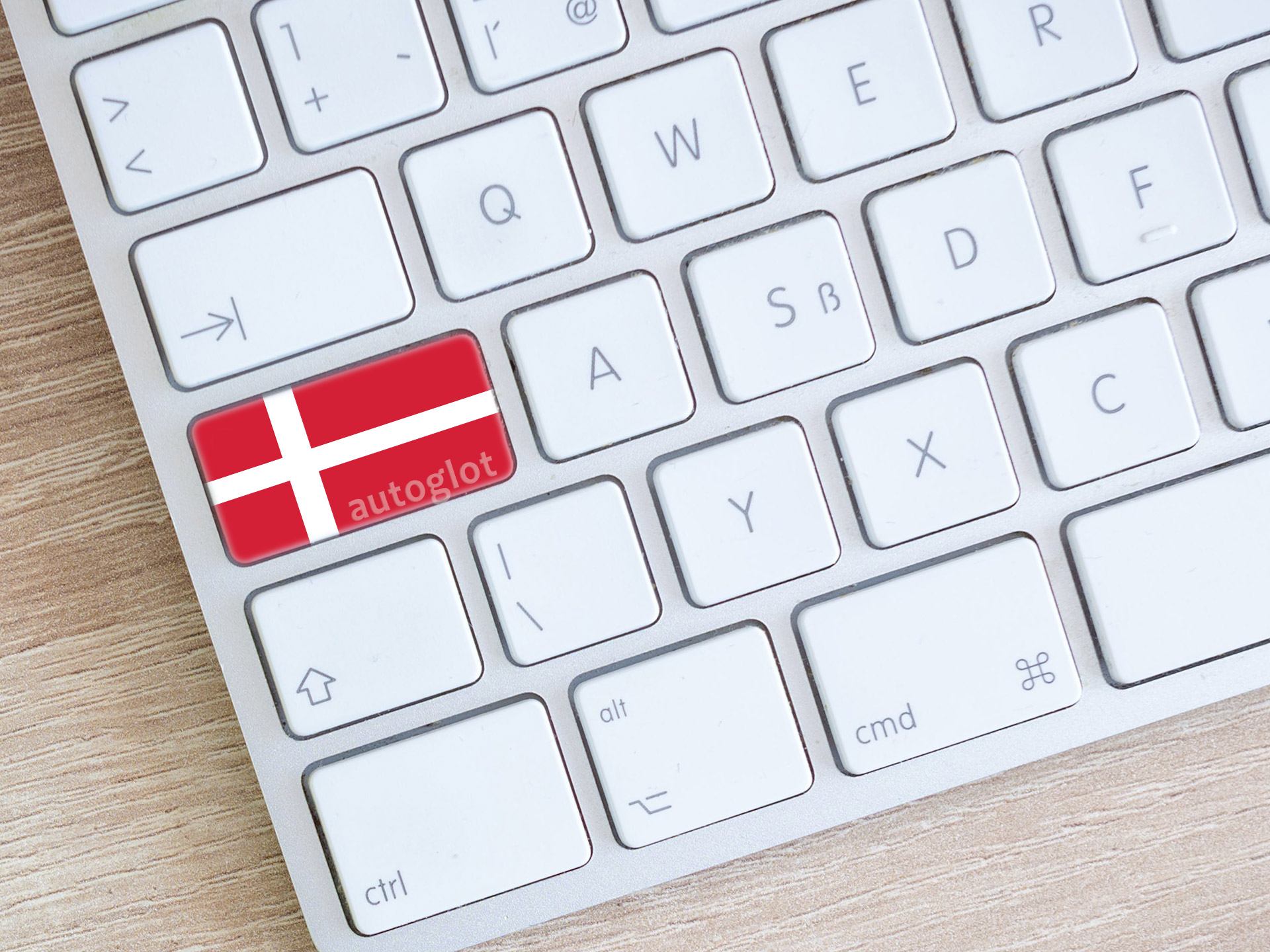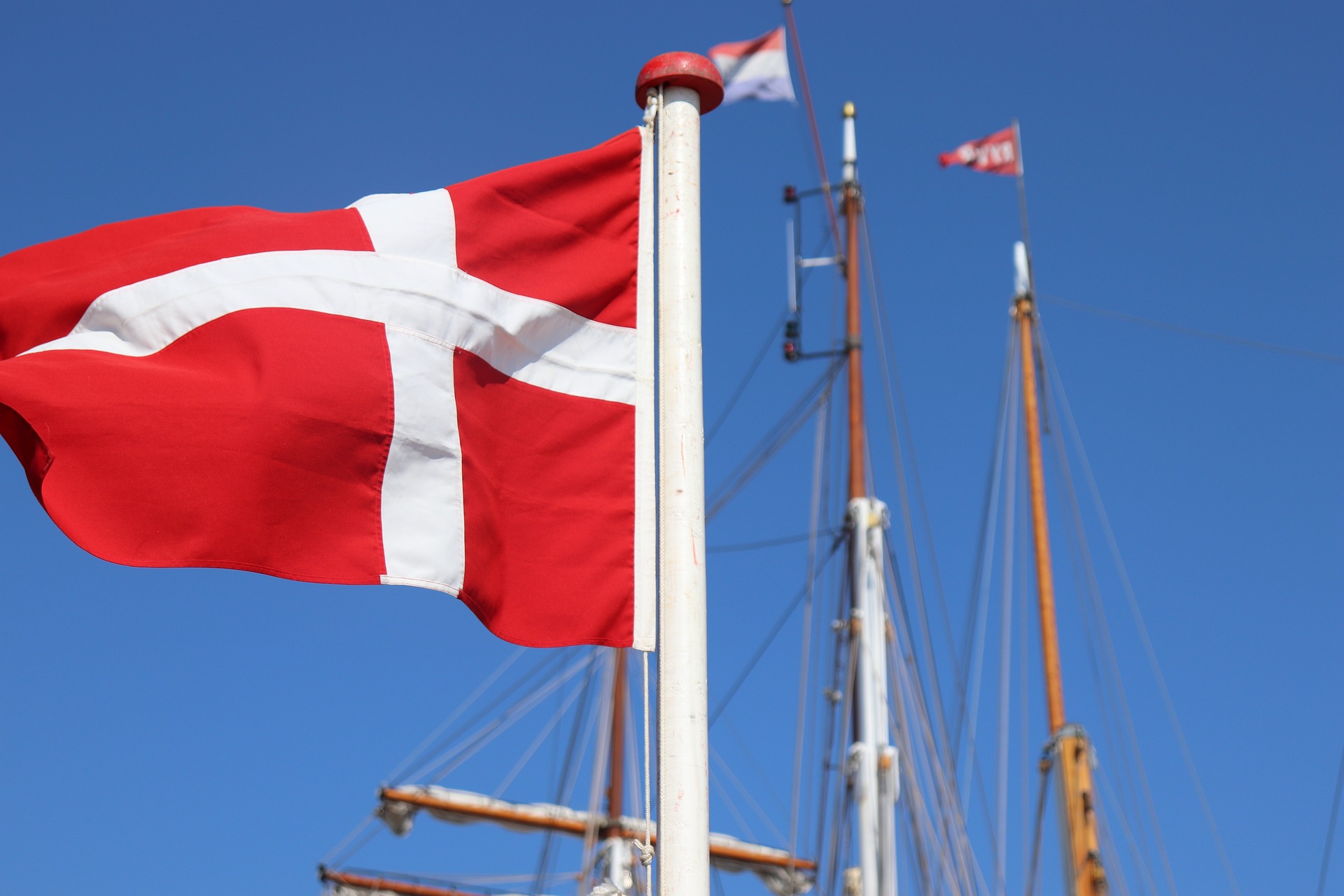
Die Bedeutung mehrsprachiger Websites kann nicht genug betont werden. Da der globale Markt exponentiell wächst, erkennen Unternehmen und Privatpersonen gleichermaßen die enormen Vorteile, die es mit sich bringt, ihr Publikum in ihrer Muttersprache zu erreichen.
Eine Sprache, die im Zusammenhang mit der Erstellung mehrsprachiger Websites von großer Bedeutung ist, ist Dänisch.
Einführung in mehrsprachige Websites und Übersetzung ins Dänische
Dänisch, eine nordgermanische Sprache, wird weltweit von etwa 6 Millionen Menschen gesprochen. Während es hauptsächlich in Dänemark verwendet wird, hat es auch auf den Färöer-Inseln und in Grönland offiziellen Status und ist damit eine Schlüsselsprache für diejenigen, die mit dem Publikum in diesen Regionen interagieren möchten.
Die dänische Sprache hat eine reiche Geschichte, die bis in die Wikingerzeit zurückreicht. Im Laufe der Jahrhunderte hat es sich zu einer unterschiedlichen sprachlichen Einheit entwickelt, die durch ihre einzigartige Phonologie, sein Wortschatz und seine Grammatik gekennzeichnet ist. Während Dänisch aufgrund seiner komplexen Vokalgeräusche und seiner wonbektionalen Morphologie möglicherweise einige Herausforderungen für nicht einheimische Sprecher darstellen kann, machen es ihre relativ einfache Syntax und Grammatik zu einer zugänglichen Sprache zum Lernen.
Für Unternehmen und Personen, die auf den dänischsprachigen Markt nutzen möchten, ist eine lokalisierte Website auf Dänisch von wesentlicher Bedeutung. Es zeigt nicht nur ein Engagement für das dänischsprachige Publikum, sondern verbessert auch die Benutzererfahrung und fördert das Vertrauen und die Glaubwürdigkeit.
Darüber hinaus kann eine dänische Version Ihrer Website angesichts der zunehmenden Verbreitung dänischer Inhalte im Internet Ihre Online-Reichweite erheblich steigern. Egal, ob Sie ein multinationaler Konzern oder ein kleines Unternehmen sind, das international expandieren möchte, die Übersetzung Ihrer WordPress-Site ins Dänische eröffnet Ihnen eine Welt voller Wachstums- und Erfolgschancen.
In diesem Artikel wird der Prozess der Übersetzung einer WordPress-Site ins Dänische untersucht und die Vorteile und Herausforderungen hervorgehoben. Wir stellen außerdem ein leistungsstarkes Tool vor, das Autoglot WordPress-Übersetzungs-Plugin, das eine nahtlose Lösung zur Automatisierung des Übersetzungsprozesses bietet und sicherstellt, dass Ihre Website das dänische Publikum effektiv anspricht. Tauchen wir also in die Welt der Dänisch-Übersetzung ein und entdecken Sie, wie Sie das volle Potenzial Ihrer WordPress-Site im dänischsprachigen Markt ausschöpfen können.
Dänische Sprache
Dänisch, ein Mitglied der nordmanischen Zweig der germanischen Sprachen, hat eine einzigartige Position unter seinen sprachlichen Gegenstücken. Mit seinen Wurzeln, die tief in die skandinavische Geschichte eingebettet sind, hat sich Dänisch über Jahrhunderte zu einer Sprache entwickelt, die sowohl unverwechselbar als auch fesselnd ist.

Geschichte der dänischen Sprache
Die Geschichte der dänischen Sprache kann bis zum 8. bis 11. Jahrhundert auf die Wikingerzeit zurückgeführt werden. In dieser Zeit wurde in der gesamten nordischen Region Old Norse, der Vorläufer moderner skandinavischer Sprachen wie Dänisch, Norweger und Schwedisch, gesprochen. Als sich nordische Siedler in der Region ausbreiteten, entwickelte sich ihre Sprache allmählich zu dem, was wir jetzt als dänisch erkennen.
Im Laufe des Mittelalters erfuhr Dänisch bedeutende Veränderungen, beeinflusst durch den Kontakt mit benachbarten Sprachen und Dialekten. Die Einführung des Christentums und die Übernahme der lateinischen Schrift prägten die Sprache weiter und führten zur Entwicklung des Mitteldänischen.
Bis zum 16. Jahrhundert hatte sich Dänisch als die vorherrschende Verwaltungs-, Literatur- und Kultursprache in Dänemark und seinen Territorien etabliert. Die Standardisierung der dänischen Rechtschreibung und Grammatik in dieser Zeit legte den Grundstein für die moderne dänische Sprache, die wir heute kennen.
Struktur, Wortschatz und Grammatik des Dänischen
Dänisch weist wie andere skandinavische Sprachen im Vergleich zu vielen anderen europäischen Sprachen eine relativ einfache grammatikalische Struktur auf. In den meisten Sätzen folgt es einer Subjekt-Verb-Objekt-Wortreihenfolge, wobei die Substantive nach Zahl und Bestimmtheit gebeugt werden.
- Eines der charakteristischsten Merkmale des Dänischen ist seine Aussprache, die durch eine große Bandbreite an Vokalen und einen einzigartigen stød oder Stimmritzenstopp gekennzeichnet ist. Diese phonetischen Merkmale verleihen dem Dänischen seine melodische und rhythmische Qualität und unterscheiden es von anderen germanischen Sprachen.
- Der Wortschatz des Dänischen stammt aus verschiedenen Quellen, darunter Altnordisch, Niederdeutsch und Latein. Während viele Wörter für Sprecher des Englischen oder anderer germanischer Sprachen unbekannt erscheinen mögen, finden Dänischlernende häufig Gemeinsamkeiten und Verwandte, die den Wortschatzerwerb erleichtern.
- Die Grammatik im Dänischen ist relativ einfach und weist im Vergleich zu Sprachen wie Deutsch oder Latein nur wenige Flexionsendungen auf. Dänische Substantive werden nach Anzahl und Bestimmtheit gebeugt, während Verben nach Zeitform und Stimmung konjugiert werden. Die Verwendung bestimmter und unbestimmter Artikel ist ebenfalls ein herausragendes Merkmal der dänischen Grammatik und beeinflusst die Wortstellung und den Satzbau.
Insgesamt stellt Dänisch zwar einige Herausforderungen für Lernende dar, aber seine reiche Geschichte, einzigartige Phonologie und einfache Grammatik machen es zu einer faszinierenden und lohnenden Sprache, die es zu lernen und zu beherrschen gilt. Ganz gleich, ob Sie sich für das kulturelle Erbe, die literarischen Traditionen oder die moderne Relevanz interessieren, Dänisch bietet einen sprachlichen Teppich, der darauf wartet, erkundet und angenommen zu werden.
Dänischsprachige Menschen
Die dänische Sprache, deren Wurzeln tief in der skandinavischen Geschichte verwurzelt sind, ist nicht nur als sprachliches Medium, sondern auch als kulturelles Erkennungsmerkmal für Millionen von Menschen weltweit von Bedeutung. Das Verständnis der Demografie der dänischsprachigen Bevölkerung liefert wertvolle Einblicke in die Reichweite und den Einfluss der Sprache in verschiedenen Regionen und Gemeinschaften.

Bevölkerung, die Dänisch spricht
Dänisch wird hauptsächlich in Dänemark gesprochen und ist dort die Amtssprache des Landes. Mit einer Bevölkerung von etwa 6 Millionen Menschen verfügt Dänemark über eine lebendige Sprachlandschaft, in der Dänisch sowohl im formellen als auch im informellen Umfeld als primäres Kommunikationsmittel dient.
Dänischsprachige Gemeinden gibt es neben Dänemark auch auf den Färöer-Inseln und Grönland, die beide autonome Gebiete innerhalb des Königreichs Dänemark sind. Obwohl diese Regionen ihre eigenen ausgeprägten kulturellen Identitäten haben, bleibt Dänisch eine wichtige Sprache für Regierung, Bildung und Handel.
Dänischsprachige Länder
Während Dänemark, die Färöer-Inseln und Grönland die Hauptregionen sind, in denen Dänisch gesprochen wird, ist die Sprache auch in anderen Teilen der Welt von Bedeutung. Aufgrund historischer Bindungen und Migrationsmuster sind dänischsprachige Gemeinschaften unter anderem in Ländern wie den Vereinigten Staaten, Kanada, Schweden und Norwegen zu finden.
Länder, in denen Dänisch Amtssprache ist
Abgesehen von Dänemark hat Dänisch den offiziellen Status auf den Färöer und in Grönland, wo es in Regierungsverfahren, Bildung und Medien verwendet wird. Diese Gebiete haben eine starke Verbindung zu Dänemark und bewahren gleichzeitig ihre einzigartige kulturelle Identität und machen Dänisch zu einem integralen Bestandteil ihres sprachlichen Erbes.
Länder, in denen Menschen Dänisch sprechen
Zusätzlich zu Regionen, in denen der dänische offizielle Status besitzt, finden sich dänischsprachige Gemeinschaften in verschiedenen Ländern auf der ganzen Welt. Ob aufgrund historischer Migration, kultureller Austausch oder wirtschaftlichen Möglichkeiten, dänische Sprecher haben lebhafte Gemeinden in Ländern wie den USA, Kanada, Australien und dem Vereinigten Königreich eingerichtet.
Insgesamt dänisch dänisch kann der Einfluss weit über die nationalen Grenzen hinausgehen. Von autonomen Territorien bis hin zu Diaspora-Gemeinschaften tragen dänischsprachige Bevölkerungsgruppen zur globalen Vielfalt von Sprachen und Kulturen bei und bereichern die Welt mit ihren einzigartigen Perspektiven und Traditionen.
Daher wirft das Verständnis der Demografie dänischsprachiger Menschen auf, die globale Reichweite und Bedeutung dieser faszinierenden Sprache zu beleuchten.
Dänisch im Internet: Wie verbreitet ist es?
In einer zunehmend miteinander verbundenen Welt dient das Internet als Tor zu globaler Kommunikation, Handel und Kultur. Daher spiegelt die Präsenz verschiedener Sprachen im Internet die Vielfalt und den Reichtum des menschlichen Ausdrucks wider. Dänisch spielt mit seinem einzigartigen sprachlichen Erbe und seiner kulturellen Bedeutung eine entscheidende Rolle bei der Gestaltung der digitalen Landschaft und der Verbindung dänischsprachiger Gemeinschaften weltweit.

Wie weit verbreitet Dänisch im Internet ist
Obwohl Dänisch im Internet möglicherweise nicht so häufig gesprochen wird wie einige andere Sprachen, ist es im digitalen Bereich dennoch stark präsent. Websites für dänische Zielgruppen decken ein breites Themenspektrum ab, darunter Nachrichten, Unterhaltung, E-Commerce und Bildung. Dänische Benutzer beschäftigen sich mit Online-Inhalten in ihrer Muttersprache und suchen nach Informationen, Unterhaltung und sozialer Interaktion auf Dänisch.
Darüber hinaus fördern die dänische Regierung und verschiedene Organisationen aktiv die digitale Kompetenz und Online -Dienste in Dänisch, um sicherzustellen, dass dänische Redner online Zugang zu wesentlichen Ressourcen und Informationen haben. Von offiziellen Regierungswebsites bis hin zu Bildungsplattformen und Social -Media -Netzwerken sind dänische Inhalte für diejenigen verfügbar, die sich mit der Online -Welt in ihrer Muttersprache befassen möchten.
Warum es wichtig ist, eine dänische Version Ihrer Website zu haben
Für Unternehmen und Einzelpersonen, die dänisch sprechende Zielgruppen erreichen möchten, ist eine dänische Version ihrer Website von wesentlicher Bedeutung. Es zeigt nicht nur eine Verpflichtung, dänische Benutzer zu dienen, sondern verbessert auch die Benutzererfahrung und erleichtert die Kommunikation in ihrer bevorzugten Sprache. Durch die Bereitstellung von Inhalten auf Dänisch können Website -Eigentümer effektiv mit dem dänischen Publikum in Kontakt treten, Vertrauen und Glaubwürdigkeit aufbauen und letztendlich den Verkehr und die Conversions vorantreiben.
Darüber hinaus kann eine dänische Version Ihrer Website Ihre Sichtbarkeit und Relevanz in dänischsprachigen Märkten verbessern. Suchmaschinen priorisieren lokalisierte Inhalte, was bedeutet, dass Websites auf Dänisch eher in Suchergebnissen für dänischsprachige Abfragen erscheinen. Dies kann Ihre Online -Sichtbarkeit erheblich verbessern und dänische Benutzer anziehen, die aktiv nach Produkten, Dienstleistungen oder Informationen auf Dänisch suchen.
Die Anwesenheit von Dänisch im Internet unterstreicht die Bedeutung der Verringerung des dänischsprachigen Publikums online. Egal, ob Sie ein Unternehmen sind, um in dänische Märkte zu expandieren oder eine Person, die sich mit dänischen Gemeinden verbinden möchte, eine dänische Version Ihrer Website ist entscheidend für den Erfolg im digitalen Zeitalter.
Indem Sie sich online dänische Sprache und Kultur annehmen, können Sie eine lebendige und dynamische Gemeinschaft von dänischen Sprechern nutzen und neue Möglichkeiten für Wachstum und Engagement freischalten.
So übersetzen Sie eine WordPress-Site ins Dänische
Die Übersetzung einer WordPress-Website in Dänisch eröffnet eine Welt voller Möglichkeiten, um das dänischsprachige Publikum zu erreichen und Ihre Online-Präsenz zu erweitern. Egal, ob Sie ein Unternehmen sind, um den dänischen Markt zu nutzen, oder ein einzelner Blogger, der sich mit dänischen Lesern verbinden möchte, und das Anbieten Ihrer Inhalte auf Dänisch die Benutzererfahrung und das Engagement erheblich verbessern.
Hier sind einige wichtige Möglichkeiten, WordPress -Sites in Dänisch zu übersetzen und das Autoglot -WordPress -Übersetzungs -Plugin als leistungsstarkes Werkzeug zur Automatisierung des Übersetzungsprozesses vorzustellen.
- Manuelle Übersetzung. Ein traditioneller Ansatz zur Übersetzung einer WordPress-Site ins Dänische ist die manuelle Übersetzung. Dazu müssen Sie professionelle Übersetzer engagieren oder die Übersetzungsarbeit selbst erledigen und jede Seite, jeden Beitrag und jedes Element Ihrer Website manuell ins Dänische übersetzen. Während die manuelle Übersetzung Genauigkeit und Qualität gewährleistet, kann sie zeitaufwändig und ressourcenintensiv sein, insbesondere bei größeren Websites mit umfangreichen Inhalten.
- Verwendung von Übersetzungs-Plugins. Eine weitere Option zum Übersetzen von WordPress -Sites in Dänisch ist die Verwendung von Übersetzungs -Plugins. WordPress bietet eine Vielzahl von Übersetzungs -Plugins, mit denen Sie Ihre Website -Inhalte in mehrere Sprachen umsetzen können, einschließlich Dänisch. Diese Plugins bieten in der Regel eine benutzerfreundliche Oberfläche für die Verwaltung von Übersetzungen, sodass Sie Seiten, Beiträge, Menüs und andere Elemente Ihrer Website problemlos übersetzen können.
- Autoglot WordPress-Übersetzungs-Plugin. Eine herausragende Option unter Übersetzungs -Plugins ist das Autoglot -WordPress -Übersetzungs -Plugin. Autoglot bietet eine einzigartige Lösung für die automatische Übersetzung Ihrer WordPress -Site in dänische und andere Sprachen, wodurch die Notwendigkeit einer manuellen Übersetzung oder mehreren Plugins beseitigt wird.
Warum Autoglot? Hauptvorteile von Autoglot
Autoglot verwendet erweiterte maschinelle Übersetzungstechnologie, um Ihre Website -Inhalte schnell und genau zu übersetzen. Mit der Unterstützung von über 100 Sprachen, einschließlich Dänisch, stellt Autoglot sicher, dass Ihre Website das dänische Publikum effektiv anspricht und die Nuancen und Nuancen der dänischen Sprache einfängt.
Darüber hinaus lässt sich Autoglot nahtlos in Ihre WordPress-Site integrieren, sodass Sie Ihre gesamte Website mit nur wenigen Klicks übersetzen können. Das Plugin erkennt automatisch die Sprache jeder Seite und übersetzt sie ins Dänische, wobei das Layout und die Formatierung Ihres ursprünglichen Inhalts erhalten bleiben.
Durch die Nutzung der Leistungsfähigkeit von Autoglot können Sie Zeit und Ressourcen beim Übersetzungsaufwand sparen und gleichzeitig sicherstellen, dass Ihre Website beim dänischen Publikum Anklang findet. Unabhängig davon, ob Sie einen kleinen Blog oder eine große E-Commerce-Website übersetzen, bietet Autoglot eine zuverlässige und effiziente Lösung, um dänische Benutzer zu erreichen und Ihre Online-Reichweite zu vergrößern.
Die Übersetzung einer WordPress-Site ins Dänische eröffnet neue Möglichkeiten für Engagement und Wachstum in dänischsprachigen Märkten. Unabhängig davon, ob Sie sich für manuelle Übersetzungen, traditionelle Übersetzungs-Plugins oder innovative Lösungen wie Autoglot entscheiden, kann die Investition in dänische Übersetzungen Ihnen dabei helfen, mit dänischen Zielgruppen in Kontakt zu treten, Vertrauen und Glaubwürdigkeit aufzubauen und letztendlich Ihre Online-Ziele zu erreichen.
Schritt-für-Schritt-Anleitung zum Übersetzen einer WordPress-Site ins Dänische
Die Übersetzung Ihrer WordPress-Site ins Dänische ist ein unkomplizierter Prozess, insbesondere mit Hilfe von Übersetzungs-Plugins wie Autoglot. In dieser Schritt-für-Schritt-Anleitung führen wir Sie durch den Prozess der Übersetzung Ihrer WordPress-Site ins Dänische mit Autoglot, von der Installation bis zur Überprüfung der Ergebnisse der automatischen Übersetzung.
Schritt 1. Plugin-Installation und -Aktivierung.
- Der erste Schritt besteht darin, das Autoglot WordPress-Übersetzungs-Plugin auf Ihrer Website zu installieren und zu aktivieren.
- Sie können dies tun, indem Sie in Ihrem WordPress-Dashboard zum Abschnitt „Plugins“ navigieren, auf „Neu hinzufügen“ klicken und nach „Autoglot“ suchen.
- Sobald Sie das Plugin gefunden haben, klicken Sie auf „Jetzt installieren“ und dann auf „Aktivieren“, um das Plugin auf Ihrer Website zu aktivieren.
Sie können Autoglot auch direkt aus dem offiziellen WordPress-Plugin-Repository herunterladen.
Quelle
Schritt 2. Registrierung im Autoglot Control Panel
- Nachdem Sie das Autoglot-Plugin aktiviert haben, müssen Sie sich für ein Konto im Autoglot Control Panel registrieren.
- Sie können dies tun, indem Sie in Ihrem WordPress-Dashboard auf das Menü „Autoglot“ klicken und „Setup“ auswählen.
- Klicken Sie dort auf den Link „Registrierung“ und befolgen Sie die Anweisungen zur Registrierung für ein Konto.
Mit dem Autoglot Control Panel können Sie Ihre Übersetzungskosten kontrollieren, die Nutzung verfolgen und neue Übersetzungspakete bestellen.
Quelle
Schritt 3. Plugin-Konfiguration
- Sobald Sie sich für ein Konto registriert haben, müssen Sie die Autoglot-Plugin-Einstellungen konfigurieren, um Ihre Website ins Dänische zu übersetzen.
- Navigieren Sie in den Autoglot-Einstellungen zur Registerkarte „Einstellungen“ und geben Sie Ihren kostenlosen API-Schlüssel über die Autoglot-Systemsteuerung ein.
- Sie können auch andere Einstellungen anpassen, z. B. Sprachumschalter, Flaggeneinstellungen usw.
Schritt 4. Wählen Sie Dänisch als Sprache aus
- Nachdem Sie die Plugin-Einstellungen konfiguriert haben, können Sie den Übersetzungsprozess starten, indem Sie Dänisch als Zielsprache für die Übersetzung auswählen.
- Navigieren Sie einfach zu der Seite oder dem Beitrag, den Sie übersetzen möchten, und Sie sehen, dass der Inhalt mit Autoglot ins Dänische übersetzt wurde.
Schritt 6. Überprüfen der Ergebnisse der automatischen Übersetzung
- Sobald der Übersetzungsprozess abgeschlossen ist, ist es wichtig, die Ergebnisse zu überprüfen, um Genauigkeit und Qualität sicherzustellen.
- Obwohl Autoglot genaue Übersetzungen liefert, ist es immer eine gute Idee, den übersetzten Inhalt noch einmal auf Fehler oder Unstimmigkeiten zu überprüfen.
- Sie können dies tun, indem Sie die übersetzten Seiten oder Beiträge auf Ihrer Website überprüfen und gegebenenfalls Korrekturen vornehmen.
Wenn Sie diese einfachen Schritte befolgen, können Sie Ihre WordPress-Site mit dem Autoglot WordPress-Übersetzungs-Plugin schnell und effizient ins Dänische übersetzen. Egal, ob Sie ein Unternehmen sind, um das dänische Publikum zu erreichen, oder ein einzelner Blogger, der sich mit dänischen Lesern verbinden möchte, Autoglot bietet eine zuverlässige und benutzerfreundliche Lösung, um Ihre Website in Dänisch zu übersetzen und Ihre Online-Reichweite zu erweitern.
Fazit: Herausforderungen und Vorteile der Übersetzung von WordPress-Sites ins Dänische
Das Übersetzen Ihrer WordPress-Site in Dänisch bietet eine Vielzahl von Vorteilen, von der Erweiterung Ihrer Online-Reichweite bis hin zur Verbesserung der Benutzererfahrung und des Engagements mit dem dänischsprachigen Publikum. In diesem Artikel wurde die Bedeutung des Catering für das dänische Publikum online untersucht und Einblicke in die demografischen Daten der dänischsprachigen Bevölkerungsgruppen weltweit geliefert.
Dies hat auch die Bedeutung des Dänischen im Internet hervorgehoben und gezeigt, warum eine dänische Version Ihrer Website unerlässlich ist, um mit dänischen Nutzern in Kontakt zu treten und Ihre Online-Ziele zu erreichen. Unabhängig davon, ob Sie ein Unternehmen sind, das dänische Märkte erschließen möchte, oder eine Einzelperson, die mit dänischen Communities in Kontakt treten möchte, ist die Übersetzung Ihrer WordPress-Site ins Dänische ein strategischer Schritt, der sich in Bezug auf Sichtbarkeit, Glaubwürdigkeit und Engagement erheblich auszahlen kann.
Wir empfehlen das WordPress-Übersetzungs-Plugin Autoglot als leistungsstarkes Tool zur Automatisierung des Übersetzungsprozesses und zur Gewährleistung präziser und effizienter Übersetzungen Ihrer Website-Inhalte ins Dänische.
Mit Autoglot können Sie Ihre WordPress-Site nahtlos ins Dänische übersetzen und problemlos dänische sowie weltweite Zielgruppen erreichen, wodurch Sie Zeit und Ressourcen bei Übersetzungsbemühungen sparen.
Quelle
Wenn Sie der Schritt-für-Schritt-Anleitung in diesem Artikel folgen, können Sie Ihre WordPress-Site schnell und effektiv ins Dänische übersetzen und so neue Wachstums- und Erfolgschancen in dänischsprachigen Märkten erschließen. Unabhängig davon, ob Sie einen kleinen Blog oder eine große E-Commerce-Website übersetzen, bietet Autoglot eine zuverlässige und effiziente Lösung, um dänische Benutzer zu erreichen und Ihre Online-Reichweite zu vergrößern.
Zusammenfassend lässt sich sagen, dass die Übersetzung Ihrer WordPress-Site ins Dänische eine strategische Investition ist, die sich im Hinblick auf erhöhte Sichtbarkeit, Engagement und Konversionsraten auszahlen kann. Indem Sie die dänische Sprache und Kultur online nutzen, können Sie mit dem dänischen Publikum in Kontakt treten, Vertrauen und Glaubwürdigkeit aufbauen und letztendlich Ihre Online-Ziele erreichen. Warum also warten? Machen Sie noch heute den ersten Schritt, um dänische Benutzer zu erreichen, und begeben Sie sich mit Autoglot auf eine Erfolgsreise in dänischsprachigen Märkten.



